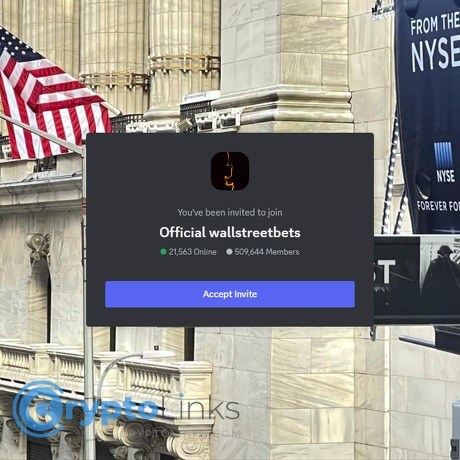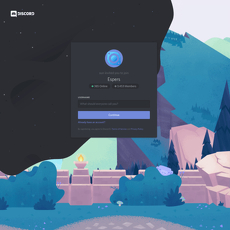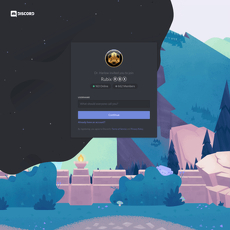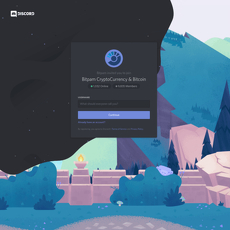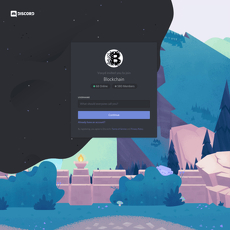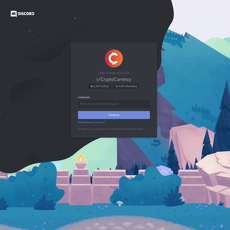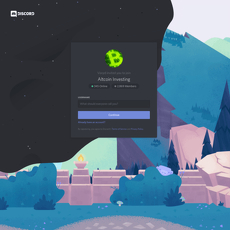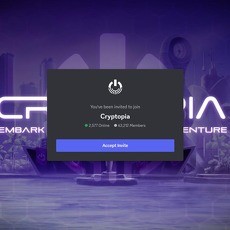Official wallstreetbets Review
Official wallstreetbets
discordapp.com
Official WallStreetBets Discord Review Guide: Everything You Need To Know + FAQ
Thinking about jumping into the official WallStreetBets Discord in 2025—but not sure if it’s legit, useful, or just a time sink? Wondering which link is real and how not to get burned by FOMO, scammers, or noisy channels?
You’re in the right place. I spend a lot of time inside trading and crypto communities, and I’ve seen exactly what helps—and what wrecks portfolios. This guide is built to keep you on the right side of that line.
The real problems people run into
If you’ve hesitated to join (or joined and bounced), odds are one of these hit you:
- Fake invites: Copycat links are everywhere. Some even spoof the URL format or use bots to pitch “premium” versions of WSB.
- Scam DMs: The second you join, your inbox fills with “alerts,” “giveaways,” and “guaranteed” option plays. No, they’re not real.
- Firehose channels: Messages fly by every second. You blink and the channel moved 500 lines.
- Confusing slang and sarcasm: Are they serious? Is this a joke? Did you just get told to YOLO your rent money?
- FOMO and regret: You see a win screenshot and feel late. You chase, you hesitate, you second‑guess. Rinse and repeat.
“Am I missing the next big play?” is the anxiety that gets people to click the wrong link, take the wrong trade, and talk to the wrong person.
Large public servers attract bad actors—full stop. Even Discord’s transparency updates have regularly highlighted huge volumes of spammy or malicious accounts being removed. Add in the high-volatility, meme-first culture of WSB, and it’s easy to get swept into impulsive decisions. Behavioral finance research has been saying the same thing for years: chasing hot tips and overtrading usually leads to underperformance. The platform isn’t the problem—random, emotional decisions are.
What you’ll actually get out of this guide
I’ll keep it practical and focused on what helps you win back time and stay safe:
- The only link that matters and how to tell a real server from a fake at a glance.
- A simple “server map” so you know where the useful stuff lives (and what to mute).
- Settings that protect your DMs and keep your notifications from turning into chaos.
- A quick slang translator so you don’t mistake memes for signals.
- A realistic playbook for using WSB as an idea stream—without letting it run your day or your portfolio.
Nothing here is financial advice. Treat WSB like a live sentiment feed and a discovery engine. The best traders use communities to source ideas, then do their own work.
Who this helps (be honest about where you are)
- Curious newcomers: Want to explore WSB without stepping on rakes? You’ll get a clean, safe starting path.
- Stock traders: You track earnings, catalysts, and short interest, and want faster reads on retail sentiment.
- Crypto traders: You want to watch when risk-on euphoria spills from stonks to coins—BTC, ETH, and the alt-of-the-week.
- Busy people: You have a job/life and need filters, not 24/7 pings.
- Signal hunters with discipline: You like crowds for idea generation but refuse to blindly copy trades.
What this is not (and why that’s good)
- Not a signals group: If you want spoon‑fed trades, you’re in the wrong place—and you’ll be an easy target for scammers.
- Not magic alpha: WSB shines as a barometer for hype, momentum, and sentiment. Use it to spot what to research—then make your own call.
- Not a time sink—if you set it up right: With the right filters, it’s a powerful, lightweight input to your process.
The truth is simple: WSB can add real value in 2025, but only if you treat it like raw information and protect yourself from the usual traps. If you’ve ever watched a ticker trend in real time, seen the memes flood in, and thought “is this for me or against me?”—you’ll feel right at home here.
Ready to step in safely and avoid the fakes? Up next, I’ll show you the exact link to use, how to verify the real server inside Discord, and the first settings to toggle so you don’t get buried in noise. Curious which checks catch 99% of scam invites in under 30 seconds?
What the “official” WallStreetBets Discord actually is (and how to join safely)
There’s only one place you should click: https://discord.gg/wallstreetbets. That’s the official WallStreetBets Discord invite. It’s a busy community server with active moderation, clear rules, and a steady stream of market chatter, memes, and ticker talk. Everything else you see in tweets, DMs, or YouTube comments is almost always a fake or a funnel to paid “signals.”
“Trust is good. Verification is better.”
Verify the invite and server authenticity
Before you join, do a 15-second authenticity check. It saves headaches—and sometimes money.
- Use the exact vanity URL: The real invite is discord.gg/wallstreetbets. Typos like /wallstreetbet, /wstreetbets, or extra dashes are fakes.
- Inspect the server at join: Real server has:
- A recognizable name and icon tied to WallStreetBets
- “Community” features enabled (rules screening, welcome screen)
- Active mod messages and pinned rules you can’t miss
- Fast-moving chat and large member count (high thousands+ online)
- Be skeptical of anything “premium” or “VIP” via DM: Mods don’t sell secret invite codes or paid lists in your inbox.
- Cross-check from the source: If you found the link on social media, sanity-check it against the vanity URL above. If it’s not identical, abort.
Why so strict? Social-platform investment scams are consistently among the costliest fraud categories reported to consumer protection agencies, and Discord is a common starting point for impostors. Bad actors count on you clicking fast. Slow them down by verifying.
Onboarding: rules, verification, and roles
Joining the official server is straightforward, but don’t speed past the guardrails—that’s where most people mess up.
- Rules screening: You’ll accept server rules on first entry. Read them. Mods enforce them and bans are quick.
- Basic verification: Expect a captcha, reaction-verify, or similar step. Some large servers also require phone verification via Discord for new accounts.
- Pick roles smartly:
- Choose only the topics you want in your feed (e.g., stocks, options, crypto).
- Opt out of “ping-heavy” roles if you hate notifications.
- If there’s a “no-pings” or “lurker” role, take it—great for staying low-noise while you observe.
Real-world example: I usually grab a general markets role and skip options alerts on day one. That lets me watch the main idea flow without getting slammed by rapid-fire greeks and chart spam I don’t need yet.
Server map: key channels to watch first
Channel names can change, but the structure is familiar across large trading servers. Here’s how I map it fast:
- #start-here / #rules / #announcements: Read these first. Pinned posts often include how-tos, role menus, and recurring resources.
- #main-chat / #stocks-chat: Fast-moving sentiment and headlines. Lurk before you talk.
- #tickers / #ideas / #dd: Higher signal density. Look for posts with a thesis, catalyst, and timeframe—not just screenshots.
- #options / #flows / #earnings: Useful if you trade catalysts or monitor gamma/IV chatter.
- #memes: Keep it fun—but keep it separate. Mute it if you’re easily distracted.
Quick workflow: Open the idea channels, hit the pushpin icon for pins, and scan the last week. Then use search filters like has: link or has: file with your ticker to find posts with evidence instead of hype.
Sample scenario: You notice multiple posts in ideas channels tagging the same ticker ahead of earnings with a link to a shareholder letter and an IV chart. That’s a signal to add it to your research queue—not to market-buy. Pin it, take notes, move on.
Notifications and filters so you don’t get flooded
The fastest way to hate a big Discord is letting it overrun your phone. Set it up right and it becomes usable—in minutes.
- Server-level settings (Desktop):
- Right-click server icon → Notification Settings
- Set to Only @mentions
- Check Suppress @everyone and @here
- Check Suppress All Role @mentions unless you want frequent pings
- Enable Hide Muted Channels to shrink clutter
- Channel-level pruning:
- Mute high-noise channels you don’t need (memes, off-topic, voice lobbies)
- Favorite/star 2–3 core channels (ideas, announcements) so they’re always on top
- Use Mark as Read aggressively—no guilt
- Mobile sanity tips:
- Tap server name → Notifications → Only @mentions
- Long-press a channel → Mute or set custom notifications
- Use the Inbox tab and filter to Mentions to triage quickly
My low-noise recipe: Only @mentions at the server level, star the ideas channel, mute memes/off-topic, and check the Inbox twice a day. I stay informed without feeling like my phone is melting.
One last thing: if someone pops up with “exclusive alerts” after you join, that’s your cue to smile, block, and move on. Good communities don’t need back-alley DMs to prove their value.
Curious what half the jokes in chat really mean—and how sarcasm works there? That’s where the fun starts. Ready for a quick translator so you don’t miss the signal hiding in the memes?
Culture and slang: how to speak WSB without feeling lost
The WallStreetBets Discord moves fast, jokes hit harder than macro reports, and half the “advice” is a punchline. That’s the charm—and the trap. If you catch the tone, you’ll see real market tells hiding under the memes.
“Come for the laughs, stay for the sentiment—but never outsource your brain.”
Think of it like a trader’s comedy club where sarcasm is the native language and screenshots do the talking. Learn the lingo, and you’ll stop mistaking jokes for trades—or worse, trades for jokes.
Quick WSB slang glossary you’ll see everywhere
Here’s the translation layer I keep handy. I’ve added realistic snippets you’ll spot in chat and what they actually mean in plain English.
- Tendies = profits.
“Secured my tendies, off to Costco.” → Closed for a gain, done trading for now. - STONKS = stocks, used ironically.
“STONKS only go up.” → Sarcastic joke about irrational rallies. - Diamond hands = holding through volatility.
“DIAMONDS till earnings.” → Plans to hold into a risky catalyst. - Paper hands = sold too early.
“Papered at +6%… FML.” → Took small profits, now regrets missing more upside. - YOLO = oversized, high-conviction bet.
“YOLO’d 0DTE calls.” → Extremely risky same-day options; often posted as a meme. - Bagholder = stuck in losers.
“Been a PLTR bagholder since 2021.” → Long-term underwater position. - To the moon = extremely bullish.
“SOFI to the moon.” → Hype, not a thesis. - GUH = pain/loss.
“Earnings GUH.” → Got wrecked after results. - DD = due diligence.
“Posting DD on AMD margins.” → Longer thesis incoming—these are rare but valuable. - FUD = fear, uncertainty, doubt.
“Ignore the FUD on BTC hash rate.” → Claims the negative chatter is overblown. - HODL = hold through chaos (crypto crossover).
“HODLing spot ETH.” → Long-term holder, not trading around. - Gamma ramp / IV crush = options jargon.
“IV crush nuked my calls.” → Implied volatility dropped after earnings; options lost value even if price was flat. - Apes together strong = group camaraderie.
“Apes buying the dip.” → Community cheerleading, not a signal. - JPOW / Papa Powell = Jerome Powell.
“JPOW speaks at 2pm, strap in.” → Expect volatility around Fed remarks.
Want a wider trading-lingo refresher? I like SoFi’s day trading terms guide for quick context.
Etiquette: memes are fun, but rules matter
There’s a line between chaos and spam. Cross it and you’ll get muted or banned. Here’s what actually earns respect:
- Bring a thesis when posting a trade. Ticker, catalyst, timeframe, risk. Screenshots help, but words matter.
- Don’t beg for signals.“What should I buy?” gets ignored. “I’m watching PLTR into earnings for margin expansion—thoughts?” gets replies.
- No unsolicited DMs or promotions. The second you pitch a “premium” group, you’ve lost the room.
- Respect the mods and the channel topics. Keep memes in memes, tickers in tickers, options talk where it belongs.
- Keep it human. No harassment. Roast the trade, not the person.
How not to look like a newbie
The pros lurk first, then talk. A few easy wins:
- Read the pins in each channel before posting. Most repeat questions are answered there.
- Search the ticker before asking. If the chat hit TSLA 30 times today, add value or move on.
- Use a clean format when you share an idea:
- Ticker & direction: AMD calls
- Timeframe: 2–4 weeks
- Catalyst: AI server demand; upcoming guidance
- Entry/Risk: Staggered entries; cut at -30% options premium
- Avoid personal referral links and anything that smells like a pitch.
- Post receipts sparingly. Screenshots with key levels or order fills are good—redacted account balances are not.
When sarcasm means “don’t follow this blindly”
WSB humor is a feature, not a bug—but it warps signals. A few tells that the post is a joke, a flex, or just attention bait:
- All caps + rocket emojis + 0DTE. That’s theater. If there’s no thesis, it’s entertainment.
- Loss posts (“GUH”) with clown music. Cathartic, not instructional. Value is in the lesson, not the trade.
- “Not financial advice” after a wild YOLO. Treat it as content, then look for actual DD elsewhere.
- Perfect entry screenshots. Survivorship bias is real. Ask: where’s the risk plan?
- Everyone suddenly bullish/bearish at once. High-message-volume herding often spikes volatility and then fades. Research on message boards (e.g., Antweiler & Frank, 2004) found that intense chatter coincides with higher volatility and short-term moves that don’t always last.
There’s also evidence that attention-fueled buying can push prices briefly before they mean-revert (see Barber, Huang, Odean). Translation: viral posts can move price—in both directions—so size accordingly and expect whiplash.
Bottom line for sarcasm: assume exaggeration until proven otherwise, and don’t mistake community energy for a risk plan.
Now that you can read the room without getting memed into someone else’s trade, the obvious question is next: when the feed explodes, how do you separate real signal from noise and save hours of scrolling? I’ll show you the exact filter I use in the next section.
What you actually get from the WSB Discord: value vs. noise
When you open the official WallStreetBets Discord, it feels like a firehose. Memes, emojis, screenshots, hot takes, and — hidden inside — a few sharp, tradable ideas. Your edge isn’t being first; it’s filtering fast.
“The market can stay irrational longer than you can stay solvent.” — often attributed to John Maynard Keynes
If you treat WSB as a real-time sentiment feed and a list of hypotheses to test (not trades to copy), you’ll be fine. The SEC’s 2021 staff report on meme-stock volatility noted that spikes in social-media activity lined up with volume surges and intraday volatility — and tended to be short-lived. Translation: it’s great for timing and context, not for blind conviction.
Signal vs. memes: how to sort fast
I use a 30-second filter before anything hits my watchlist:
- Repetition: Is the ticker mentioned by multiple users over hours, not just one loud voice?
- Thesis on the screen: Are there specifics — catalyst date, expected numbers, or a narrative beyond “to the moon”?
- Checkable facts: Earnings date, short interest, borrow fees, float. If I can’t verify in two clicks, I pass.
- Earnings: Nasdaq Earnings Calendar
- Short interest: Nasdaq Short Interest
- Borrow fee/short squeeze metrics: Fintel
- Positioning details: Size, timeframe, and risk are stated. “All-in” with no plan is noise.
- Independent confirmation: A second source (company IR, SEC filing, reputable news) backs the claim.
Quick tactics to speed this up:
- Use Discord search like a pro: in:#channel TICKER since:YYYY-MM-DD to see the history of chatter.
- Pin or star posts that include a real thesis or data. Build a mini research queue.
- Treat screenshot PnLs as entertainment, not evidence. Pre-trade plans > after-the-fact brags.
What usually makes the cut? Repeated mentions + a near-term catalyst + verifiable data. If two of those are missing, I keep scrolling.
What stocks does WSB target?
WSB gravitates to high-beta, story-heavy names with options liquidity. Think TSLA, PLTR, AMD, SOFI, SPCE, LCID, PTON — and, occasionally, the old favorites when headlines flare. Public trackers like TipRanks’ WallStreetBets page capture these rotations pretty well.
What puts a ticker in the spotlight:
- Near-term catalysts: Earnings, product events, deliveries, FDA decisions, court rulings.
- Asymmetric narratives: Turnarounds, short-squeeze setups, “AI adjacencies,” or controversial guidance.
- Options playground: Tight spreads, active weeklies, and visible open interest for squeeze fuel.
Real-world patterns I’ve actually seen pay attention to:
- PLTR into earnings: Chatter spikes around government deals and ARR. Useful? Yes — but mind IV crush on calls the morning after. I note the date, skim the last transcript, and map the risk to weekly options.
- TSLA around deliveries: Weekend numbers lead to Monday gaps and 0DTE noise. I track delivery consensus, then watch the first 30 minutes for failed breakouts rather than guessing beforehand.
- SOFI on guidance: The room gets loud when rates or loan headlines hit. I check the 10-Q and management notes before I believe any “this changes everything” post.
One sentence pre-mortem I write down before any meme-friendly trade: “This fails if the catalyst is already priced in or if IV crush eats the premium.” That alone has saved me more than any emoji could.
Is there a crypto angle on WSB?
Yes — when risk appetite runs hot, crypto talk ramps up. You’ll see BTC and ETH daily, plus spurts of altcoin hype when a narrative catches (ETFs, halving, memecoins, L2 launches). I use it to gauge heat, then confirm with market data:
- Spot ETF flows: Are inflows actually strong? Check free dashboards like Farside Investors’ ETF flow tracker.
- Funding rates/liquidations: Overheated perps often precede washouts. I glance at Coinglass.
- Headline verification: Exchange listings, outages, or protocol upgrades — verify on official channels before touching it.
Crypto chatter can be early on momentum but late on exits. I treat it like a thermometer, not a GPS.
Bots, tools, and pinned resources
Most large servers run bots that post quick quotes, news blurbs, and sometimes options flow snapshots. Helpful? Yes. Sufficient? Never. Here’s a lightweight toolkit I keep in a tab group while browsing the WSB Discord:
- Earnings calendar: Nasdaq
- SEC filings (8-K, 10-Q, S-1): EDGAR
- Short interest/borrow: Nasdaq, Fintel
- Options visualizer: OptionStrat (check OI and IV before chasing weekly calls)
- Trending WSB tickers: TipRanks WSB
In Discord, I always scan the pinned messages in idea channels. Mods often collect recurring resources or best practices there. If a ticker bot or “flow” summary catches my eye, I still look for a real thesis and a clock (when does the edge decay?).
Here’s the mental checklist I lean on: Three green flags (repetition, verifiable catalyst, sane risk) = watchlist. Two red flags (no data, one-liner hype) = hard pass.
WSB is powerful when you use it to frame questions for your research — not to outsource decisions. Which brings me to an important question: do you know the simple Discord settings that block 99% of scams before they reach you? Keep reading — I’ll show you the exact switches to flip next.
Safety first: scams, privacy, and protecting your bankroll
If there’s one habit that separates the folks who last from the ones who get wiped, it’s not a secret strategy—it’s basic security. Big, fast-moving servers attract scammers the way green candles attract FOMO. Protect your account, your identity, and your cash like they’re your edge—because they are.
“Amateurs hack systems, professionals hack people.” — Bruce Schneier
Here’s how I keep things tight, with real examples I’ve seen again and again—and what actually works.
The golden rule: never trust unsolicited DMs
Scammers know you’re busy and curious. They exploit both. Common plays I see:
- “You won Nitro” / “Premium alpha” — A fake mod sends a link to “claim” a prize or join a special room. The page steals your Discord token and your account spams others in minutes.
- “Verification required” — You’re told you’ll be kicked unless you verify on a website. That site grabs your credentials or installs a token grabber.
- “Airdrop now, limited spots” — Looks like a legit crypto site, but the contract is a wallet drainer. Connect = goodbye funds.
Data backs it up. The FBI’s 2023 IC3 report shows investment fraud was the top category by losses, with billions reported—crypto-related investment scams surged year over year (IC3 2023). Social platforms are a prime vector; the FTC has repeatedly flagged social media as a leading path for scams and losses (FTC).
My rule: if someone contacts me first about money, I treat it as a scam until proven otherwise. No exceptions.
Lock down Discord settings
Two minutes here saves you hours of cleanup later. Do this now:
- Kill unsolicited DMs: User Settings → Privacy & Safety → Server Privacy Defaults → toggle Allow direct messages from server members to OFF. Do the same under Friend Requests (allow only from mutuals you trust).
- Enable 2FA with an authenticator app (not SMS): User Settings → My Account → Enable Two-Factor Auth. Store backup codes offline.
- Reset sessions after any scare: Change password → Log out of all devices. Then review User Settings → Devices and Authorized Apps; revoke anything you don’t recognize.
- Harden privacy filters: Privacy & Safety → set Keep me safe for direct messages, and disable message requests from non-friends.
- Don’t overshare in your profile: No phone, email, or wallet handles. Keep display names simple; impersonation feeds on personal clues.
Helpful references: Discord privacy settings and Discord Safety Center.
Screen sharing without leaking your life
- Share a single app window, not your entire screen. Close wallets, email, and exchanges first.
- Disable desktop notifications (OS-level Do Not Disturb) so pop-ups don’t reveal account info or 2FA codes.
- Use a “clean” browser profile with no saved logins or extensions when showing charts.
- Never scan QR codes or approve wallet prompts during a stream. That’s how “verification” tricks drain wallets.
Wallet safety for the crypto-curious
- Use a hardware wallet for anything you intend to keep.
- Create a burner wallet for testing unknown links. Keep gas only; nothing you can’t lose.
- Review and revoke approvals regularly via tools like Revoke.cash.
- Never share seed phrases, private keys, or QR sign-ins. No mod or bot needs them—ever.
Scam toolkits (“wallet drainers”) are industrialized now; several research groups tracked hundreds of millions stolen via malicious approvals and fake airdrops in recent years (Chainalysis, ScamSniffer).
Risk management so YOLO doesn’t become GUH
Security keeps thieves out. Risk rules keep you from hurting yourself. A few guardrails that work in chaotic rooms:
- Set a hard max loss per trade (common ranges: 0.5%–1% of account). Pre-commit; no “one more candle.”
- Position sizing first, thesis second, entry last. If you can’t explain the trade in one paragraph with catalyst, invalidation, and timeline, pass.
- Use defined-risk structures for options until you’re consistent (spreads instead of naked, avoid zero-day roulette if you can’t monitor).
- Delay rule: wait 15 minutes after seeing a hyped post before acting. If it’s still good, it’ll still be good.
- Daily stop and cool-off: hit your daily max loss? Close the platform. Protect the month, not the minute.
- Journal screenshots are entertainment, not signals. Survivorship bias is real.
Overtrading crushes returns. Classic research on retail behavior found that the most active traders often underperform by a wide margin (Barber & Odean). Your edge isn’t speed—it’s discipline.
Legal and market integrity reminders
- No coordination or pump rooms. The SEC has charged groups running manipulation schemes on Twitter/Discord before—one case highlighted more than $100M in alleged pump-and-dump profits.
- Never share private or nonpublic info (work, vendor, or investor materials). That’s how careers end.
- Follow your local laws and broker rules (Pattern Day Trader, margin, tax). “Everyone does it” won’t help in an audit.
Fast red-flag checklist
- Urgency + secrecy: “Don’t tell mods, limited spots.”
- Off-platform switch: “Move to Telegram/WhatsApp for signals.”
- Payment first: “Deposit to unlock access/refund.”
- Too-slick sites with brand typos or fresh domains.
- “Verification” links that ask you to log in again or sign a wallet message you don’t understand.
If something goes wrong: your incident playbook
- Compromised Discord? Change password immediately → log out of all devices → revoke Authorized Apps → enable/refresh 2FA → tell mods via public channel, not DMs.
- Clicked a suspect link? Run a malware scan, rotate passwords, and check your browser extensions for anything new.
- Approved a bad wallet contract? Revoke permissions (revoke.cash), move funds to a fresh wallet, and consider a hardware device.
- Sent funds to a scam? Save evidence, file with your exchange, and report to IC3 or your local authority. Recovery is rare—but timing matters.
“The best trade is often the one you don’t take.”
Locking this down sets you up to actually use the community without the stress. But is it still worth the time in 2025—signal-wise? That’s the next thing I’m going to unpack, with an honest look at where WallStreetBets shines now and where it doesn’t. Ready for the straight answer?
Is WallStreetBets still a thing in 2025? Here’s the honest take
Short answer: yes. The crowd hasn’t gone anywhere. The subreddit crossed 13M+ members by late 2022 (per Wikipedia), and the ecosystem—Discord included—still wakes up fast when there’s a catalyst. Think earnings for cult names, macro headlines, or a sudden meme spark.
What’s changed is rhythm. It’s less “constant chaos,” more “on-demand fireworks.” When volatility spikes, conversations explode; when markets calm down, you’ll see more watchlists, memes, and light banter. That pattern is normal—and useful if you treat WSB as a live sentiment barometer rather than a trade signal machine.
What “relevance” looks like now
I think about WSB in three modes:
- Lull: Mostly memes and scanning. Good for building a watchlist.
- Buzz: A ticker gets repeated with a clear catalyst (earnings date, guidance rumor, short interest). Good for tracking sentiment momentum.
- Frenzy: Headlines hit or a cult leader resurfaces. In 2024, “Roaring Kitty” reappeared and GME ripped—Discord went thermonuclear. This is when liquidity and volatility spike, but so does misinformation.
There’s decent evidence that attention itself can move the needle short term. During the 2021–2024 meme waves, academic and industry writeups repeatedly showed that retail attention and unusual options activity tended to coincide with elevated volume and short-horizon price swings. You don’t need to turn those papers into a PhD to benefit—just recognize that spikes in chatter often line up with spikes in risk.
Recent, real examples I’ve seen inside WSB-style feeds:
- GME (mid-2024): Sentiment bonfire after a single social post; Discord and the subreddit blew up. Great reminder that narrative can eclipse fundamentals for a while.
- NVDA earnings cycles (2023–2025): Option chains and “directional bets” chatter surge the week of earnings. The value isn’t the hot takes—it’s spotting how crowded the trade is.
- PLTR/TSLA/AMD rotations: When one “hero ticker” cools, attention rotates. Watch the handoff days—those are often the highest-risk entries to chase.
Translation: WSB is still relevant, especially during catalysts. It’s a sentiment heat map, not a cheat code.
How to use WSB alongside other sources
Here’s the quick, practical way I make it work without getting drowned in noise:
- 2-minute scan: Note tickers mentioned repeatedly alongside a specific catalyst (“earnings in 48h,” “short float X%,” “new filing”). If there’s no clear catalyst, skip.
- Check the calendar: Earnings date and macro events (CPI/FOMC). Crowded trades right before big releases can be coin flips.
- Options/flow check: Look for unusual activity and skew. If the Discord hype is hot but flow is lukewarm, that’s a yellow flag.
- Short interest + liquidity: Days-to-cover and borrow rate matter. Thin liquidity plus high short interest is where you see squeezes—and ugly reversals.
- Basic TA sanity check: Levels, gaps, recent ATR. You don’t need a Picasso chart—just know where you’re wrong.
For quick cross-checks, tools that track trending tickers and sentiment are handy (for instance, platforms that aggregate “Top WallStreetBets Stocks” or track mention velocity). A simple trio—an earnings calendar, an options flow feed, and a short-interest snapshot—will keep you grounded. If you’re new to the lingo, a retail-friendly terminology page (like SoFi’s day-trading slang explainer) helps you parse the jokes from the real talk.
Rule of thumb: When WSB is loud and your other checks say “meh,” sit tight. When WSB is buzzing and your checks confirm a real catalyst with liquidity, that’s research-worthy.
Use them to validate what you’re seeing in-chat in under five minutes. If you can’t justify the idea with a quick cross-check, it’s probably just a meme—fun to watch, expensive to chase.
One more thing before we move on: Want a fast checklist for avoiding the classic Discord traps (fake invites, scammy DMs, and “premium alpha” bait)? I’m laying out the no-nonsense answers next—curious which setting saves the most headaches?
FAQ and final thoughts: quick answers before you join
This is the screenshot-friendly section. Keep it tight, keep it safe, and get the most out of the real server without getting wrecked.
Is WallStreetBets still a thing?
Yes—very much. The community stays huge and active, with activity spiking around earnings, macro shocks, and meme waves. It’s best used as a retail sentiment pulse, not a trade copier.
- Context matters: The SEC’s 2021 staff report on the meme-stock events showed how retail attention and options activity can amplify short-term moves.
- Why that matters: WSB buzz can push volume and volatility in the short term. Treat it as a signal to research, not to FOMO.
- Curious about size? You can sanity-check the scale on Wikipedia; membership growth has been massive since 2021.
What’s the slang I need to know?
- Tendies: profits
- STONKS: stocks (jokey)
- Diamond hands: hold through volatility
- Paper hands: sell too early
- YOLO: big conviction bet
- Bagholder: stuck in losses
- To the moon: very bullish
- GUH: pain/loss
Tip: Sarcasm is common. If a post sounds outrageous, assume it’s humor until you see a clear thesis, risk, and timing.
What stocks does WSB target?
Mostly volatile, story-heavy names with news, short interest, or cult followings. Examples that cycle frequently:
- Big beta/liquidity: TSLA, AMD
- Cult/watchlist names: PLTR, SOFI
- “Meme-able” or event-driven: SPCE, LCID, PTON
Expect weekly rotations based on earnings calendars, macro headlines, and options flow. If a ticker is getting repeated mentions + a thesis (catalyst, timing, risk), that’s your cue to research—not to copy.
Is there a crypto angle?
Yes. BTC and ETH chatter picks up during risk-on cycles; alts pop up when hype runs hot. Use it to gauge heat, not to set allocations. Crypto moves fast—verify everything before acting.
How do I make sure I’m joining the real server?
- Only join via: https://discord.gg/wallstreetbets
- Check server name, member count, and mod activity once inside.
- Ignore DMs promising “premium alpha,” giveaways, or wallet connections.
How do I avoid scams in 60 seconds?
- Turn off “Allow direct messages from server members.”
- Never share seed phrases, codes, or account screenshots.
- Don’t click surprise links or QR codes—report and block.
Can WSB chatter actually move prices?
Sometimes, especially short term and around catalysts. Academic and regulatory work (including the SEC’s 2021 report) shows retail attention can amplify volatility and volume. That doesn’t mean every mention is a money printer—it means attention is a factor to watch.
What’s the fastest way to use it without wasting my day?
- Open the main idea channels and scan for tickers with repeated mentions + a thesis.
- Note catalysts (earnings dates, short interest, product launches) and set alerts on your broker/charting app.
- Mute meme/noise channels; keep notifications on for your tracked tickers only.
- If you can’t explain the trade in one paragraph, skip it.
Will I get rich copying trades from screenshots?
No. Screenshots are context-light and often late. Use them as a starting point to investigate, not a signal to press buy.
Do paid signals or “premium rooms” make sense here?
Be skeptical. The best edge is still your own process: catalyst tracking, risk control, and timing. If someone has real edge, they don’t cold-DM strangers.
Final call: join smart, stay safe, and treat it as signal—nothing more
If you’re going to check out the official Discord, use the real link: https://discord.gg/wallstreetbets. Lock down your settings, lurk first, and treat everything as raw ideas. It’s a great sentiment feed and entertaining, and sometimes it sparks a solid trade—if you keep your head, define risk, and avoid FOMO.
None of this is financial advice. Markets are risky. Protect your bankroll first.
Want more guides like this? I post them here: Cryptolinks.com.
CryptoLinks.com does not endorse, promote, or associate with Discord servers that offer or imply unrealistic returns through potentially unethical practices. Our mission remains to guide the community toward safe, informed, and ethical participation in the cryptocurrency space. We urge our readers and the wider crypto community to remain vigilant, to conduct thorough research, and to always consider the broader implications of their investment choices.

